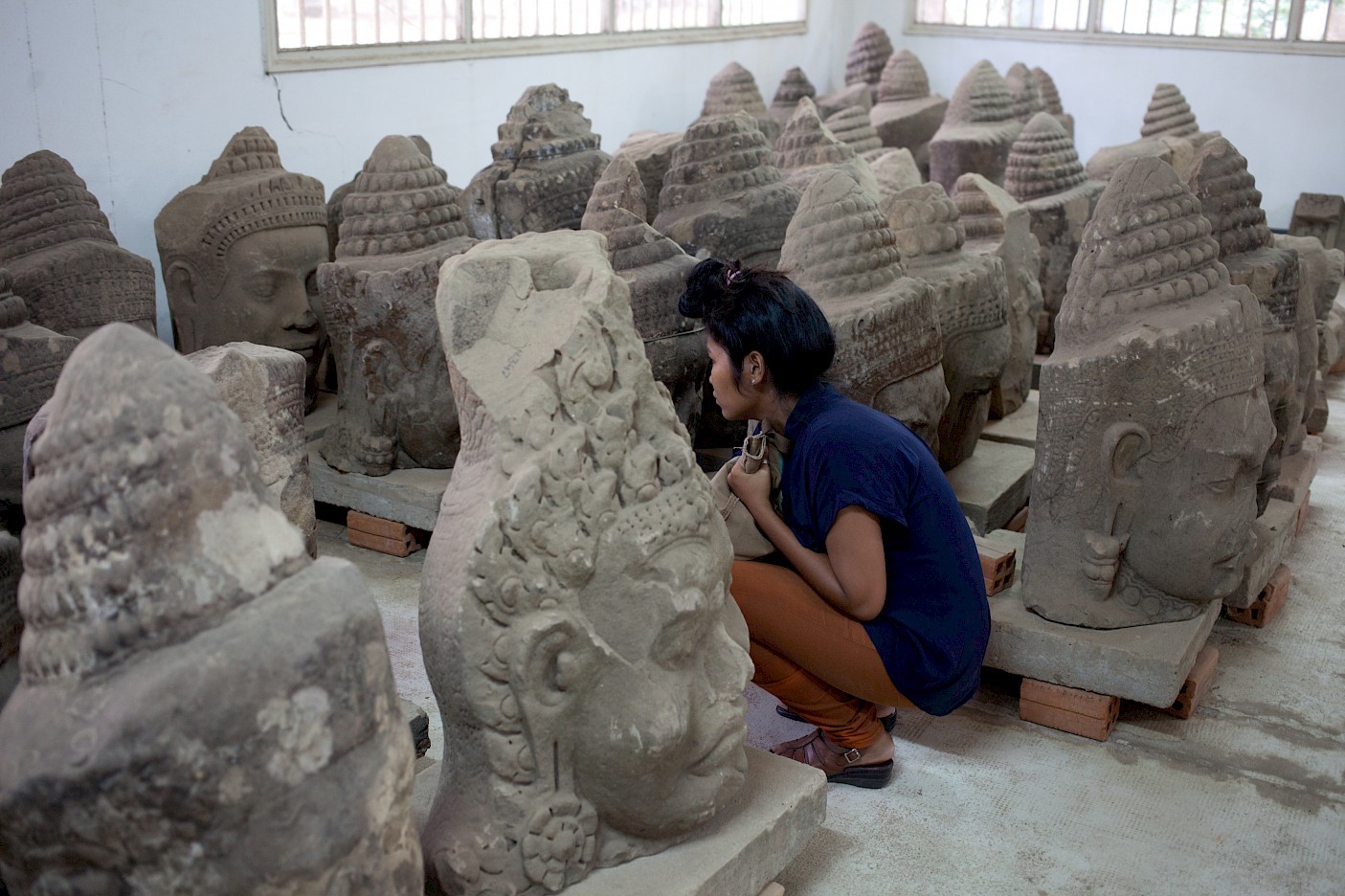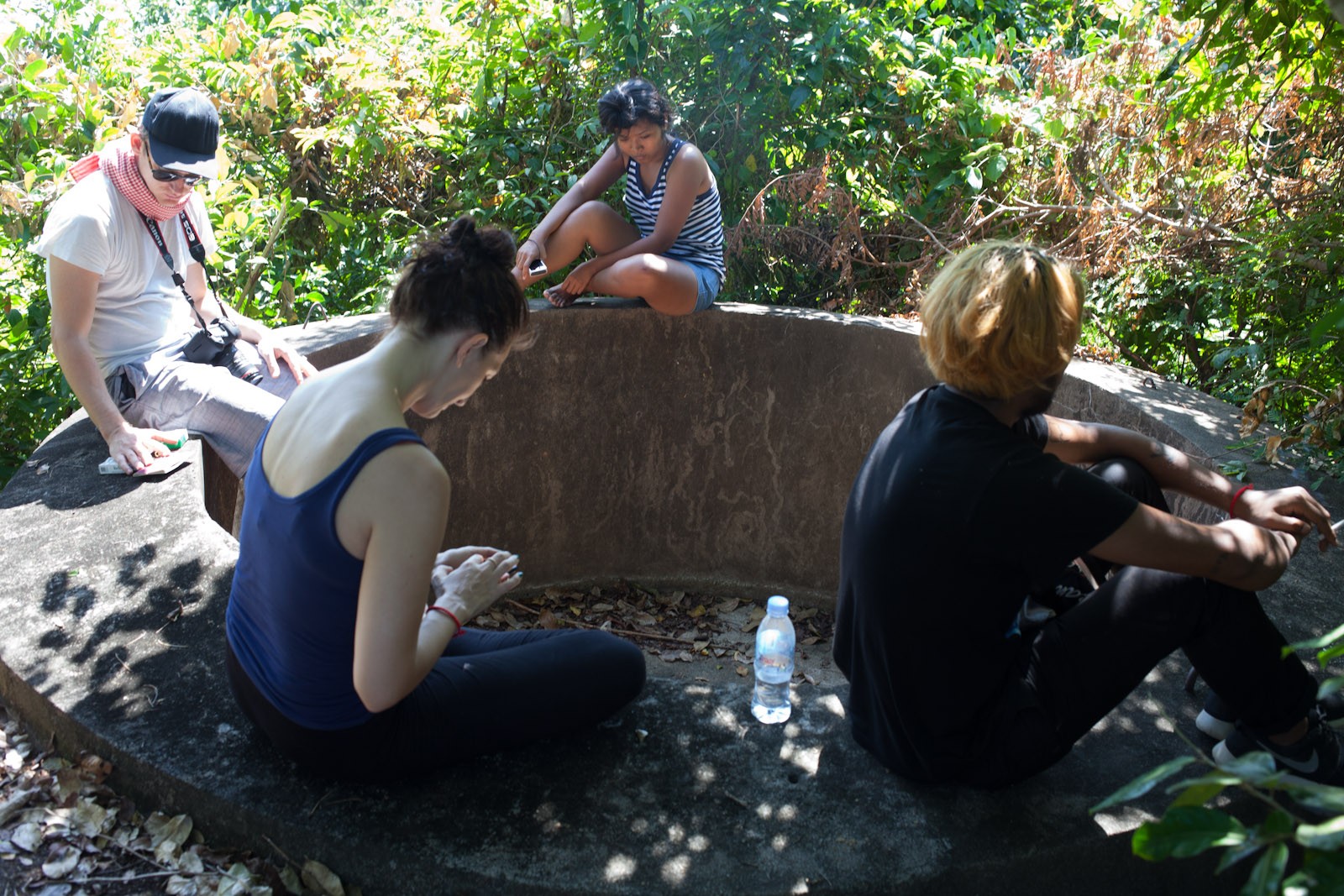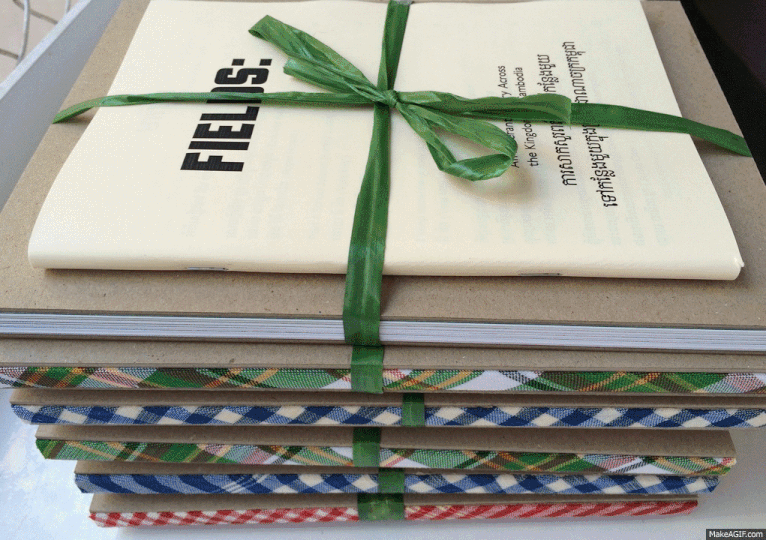INFO
| Name | FIELDS: An itinerant inquiry across the Kingdom of Cambodia |
| Year | 2013 |
| Start Date | 2 December 2013 |
| End Date | 22 December 2013 |
| Names of Artists | Charlotte Huddleston, Vera Mey, Janita Craw, Alex Monteith, Luke Willis Thompson, Albert Samreth, Erin Gleeson, Khvay Samnang, Amy Lee Sanford, Lim Sokchanlina, Tith Kanitha, Roger Nelson, Tue Greenfort, Ute Meta Bauer, Julia Moritz, Anca Rujoiu, Fang-Tse Hsu, Arin Runjung, Chum Chanveasna, Albert Samreth |
| Curator | Vera Mey, Erin Gleeson |
| Organiser / Venue | ST PAUL St Gallery (Tāmaki Makaurau), SA SA BASSAC (Phnom Penh) |
| Artform | Visual arts |
ABOUT
FIELDS was a shared journey across Cambodia, undertaken by a group of artists and curators from Aotearoa, Cambodia, Australia, Denmark, Germany, Romania, Taiwan, and Thailand. Initiated by Erin Gleeson and Vera Mey, thiswas a collaboration between their respective institutions: SA SA BASSAC in Phnom Penh and ST PAUL St Gallery (AUT) in Tāmaki Makaurau. The project was part of a larger thematic arc at ST PAUL St Gallery at the time, led by the interests of assistant director Vera Mey and director Charlotte Huddleston, to explore Aotearoa art practice within the context of the broader Asia-Pacific region.
Described as a “month-long nomadic residency”, the experience was open-ended, emphasising collective learning. A publication was produced following the residency, and it was anticipated that “a number of individual and collective outcomes” might result, but the focus was the experience itself rather than driving towards specific artistic production. This de-prioritisation of the exhibition as the primary outcome was, and is, unconventional, but reflects strategies of open-ended practice and ‘unlearning’ that were being explored in international contemporary art practice and by ST PAUL St at the time.
The residency was designed with an awareness of the “modes of colonial exploration, exoticism, and contemporary tourism” that have characterised engagement with Cambodia, and the programme sought to respond to the legacy of paternalistic ethnography by practising a form of fieldwork that was “not the study of the other but a collaborative pedagogy rooted in mutualism.” Reflecting on the residency a few years later, curator Vera Mey wrote that:
“this project simply changed my life. [...] we gave up looking for a specific something or even anything. At the residency’s culmination we also let go of the desire to produce, let alone respond through the lens of contemporary art. Even though the curatorial eye can panoptically encompass anything and everything and the demands of funding wanted a tangible output, it was necessary to learn and leave things alone.”
The year after FIELDS, Mey relocated to Singapore and continued to develop her focus on the artistic context of Southeast Asia.
- Establishing sakasalas (workshops) in Phnom Penh: on language and epigraphy at the Buddhist Institute, on colonial audiovisual archives at Bophana Resource Center, and an analog political history mapping exercise at a karaoke club.
- Visit to Udong, the pre-colonial royal capital of Cambodia.
- Siem Reap, where the group took part in a 3-day Khmer Studies conference titled ‘Don’t Abandon the Indirect Road: Divergent Approaches to Cambodian Visual Cultures’.
- Visit to Angkor, including time spent with the “guardians of the main repository of categorized stone remnants; archeologists of a recently discovered ancient bronze-casting artisan workshop; scholars of Buddhist temple narratives and iconography; itinerant painters responsible for the temple’s west wall depictions of hell; and practioners of sak yant, or yantra tattooing.”
- Overnight stay with “the floating village community of Kompong Pluk on the Tonle Sap Lake for a night of films by Charlie Chaplin, the archetype for Cambodian comedians.”
- Travel to the Cambodian highland regions of Mondulkiri, home to the indigenous Bunong, to “be guided in daily works and ritual ceremony for four days”.
- A vist to “Memot to walk the hills of Iron Age circular earthworks”.
- Tracing “a series of urban legends including architect Vann Molyvann’s Independence-era iconic works; the award winning fiction writer behind the Khmer translations of Beyonce; and the Documentation Center of Cambodia whose mantra is ‘searching for the truth’.”
Funding and support was drawn from the School of Art + Design, AUT University, School of Education, AUT University, NICAI, University of Auckland, and the Asia New Zealand Foundation. Participants included Charlotte Huddleston, Vera Mey, Janita Craw, Alex Monteith, Luke Willis Thompson, Albert Samreth, Erin Gleeson, Khvay Samnang, Amy Lee Sanford, Lim Sokchanlina, Tith Kanitha, Roger Nelson, Tue Greenfort, Ute Meta Bauer, Julia Moritz, Anca Rujoiu, Fang-Tse Hsu, Arin Runjung, Chum Chanveasna, and Albert Samreth.
An accompanying book in English and Khmer was published in 2015. The programme reflected many of the interests that Mey would continue to explore in her curatorial practice and scholarship, as well as the relationships with international artists, curators, and institutions that ST Paul St Gallery (now called Ngutu Kākā) cultivated at that time, seeking to situate their work in a wider field of international connections and practice.






